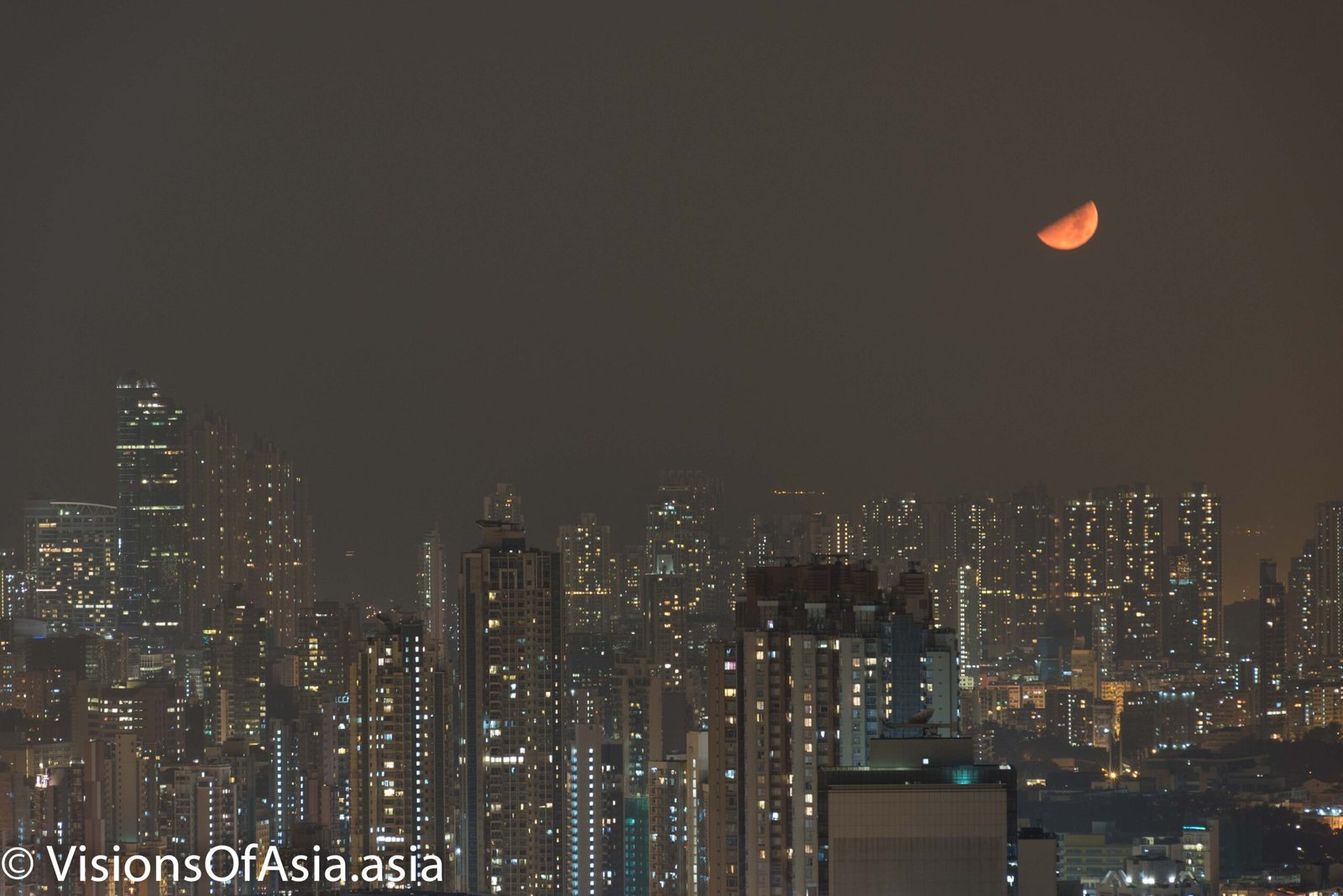Tonight, there was a red moon on Hong Kong. As the moon crescent was well formed and the skies were somehow clearer, the moon could be clearly visible as it went down over the horizon. Sadly, as always where there is nice weather on Hong Kong, the sky still had some haze.
Why a red moon?
Well, it is important to mention that earlier during the evening, the moon was not red. It was white. It got that reddish tone, simply because as it got lower, the atmospheric pollution caused the bluish components of the light to be lost.
You can find an interesting explanation on the causes of that phenomenon on USCB Science Line.
Technical aspects
On the technical side, the picture was shot at 200 mm, and I raised the iso slightly to 400, in order to keep a faster shutter speed (exposure is still 15 seconds here!), to try to keep the moon clear enough to be distinguishable.
The earth turns!
When you are doing astrophotography, an important part to bear in mind, and this is particularly true for the moon: the earth rotates!
It may not seem as much, but the rotation of the earth is sufficient to cause a blur during the 15 seconds exposure on this picture.
Astronomists generally use a gear that rotates slightly the camera to account for the earth’s rotation, but obviously, that’s not my specialty right now.
How to get the moon clearer?
You can opt to try shorter exposure times by opening the diaphragm and increasing the shutter speed to keep exposure as short as possible. Obviously, it gets tricky with you include darker elements such as a cityscape. In the end, as always, it ends up being a question of choices and compromise. I made the choice to keep the picture with as little grain as possible while reducing exposure time to try and minimize the effect of earth’s rotation.

